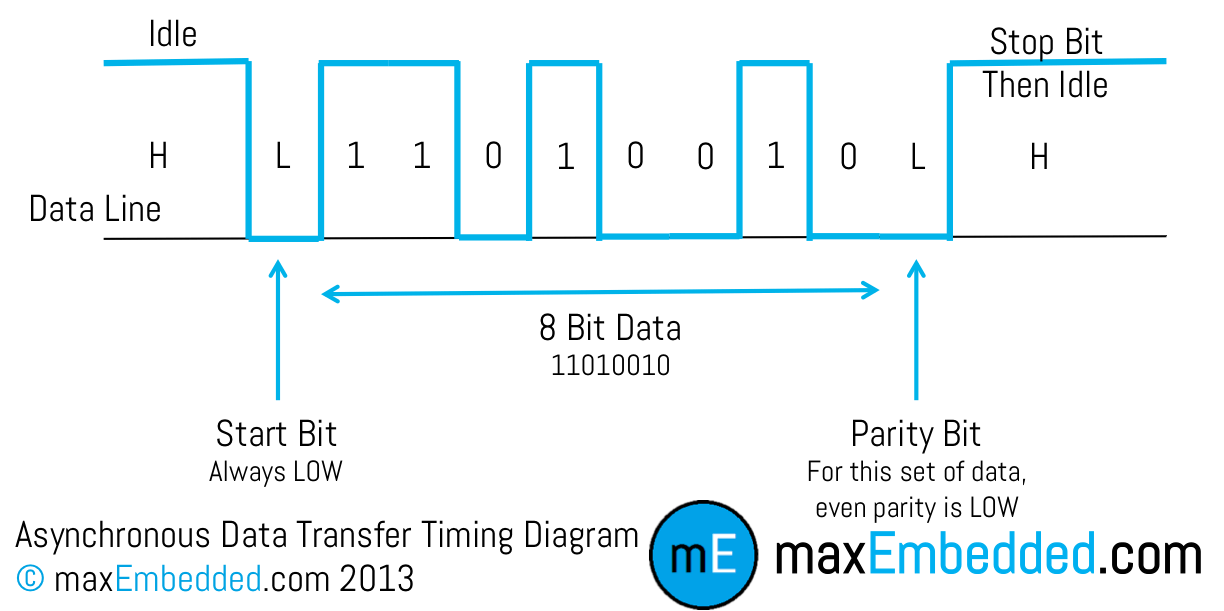Serial Transmission Modes.
Serial Transmission Modes
Serial data can be transferred in two modes – asynchronous and synchronous.
Asynchronous Data Transfer:
Data Transfer is called Asynchronous when data bits are not “synchronized” with a clock line, i.e. there is no clock line at all!
Let's take an analogy. Imagine you are playing a game with your friend where you have to throw coloured balls (let’s say we have only two colours – red (R) and yellow (Y)). Let's assume you have an unlimited number of balls. You have to throw a combination of these coloured balls to your friend. So you start throwing the balls. You throw R, then R, then Y, then R again and so on. So you start your sequence RRYR… and then you end your round and start another round. How will your buddy on the other side know that you have finished sending him the first round of balls and that you are already sending him the second round of balls?? He/she will be completely lost! How nice it would be if you both sit together and fix a protocol that each round consists of 8 balls! After every 8 balls, you will throw two R balls to ensure that your friend has caught up with you, and then you again start your second round of 8 balls. This is what we call asynchronous data transfer.
Asynchronous data transfer has a protocol, which is usually as follows:
- The first bit is always the START bit (which signifies the start of communication on the serial line), followed by DATA bits (usually 8-bits), followed by a STOP bit (which signals the end of the data packet). There may be a Parity bit just before the STOP bit. The Parity bit was earlier used for error checking but is seldom used these days.
- The START bit is always low (0) while the STOP bit is always high (1).
The following diagram explains it.
Synchronous Data Transfer
Synchronous data transfer is when the data bits are “synchronized” with a clock pulse.
We will take the same analogy as before. You are still playing the throw-ball game, but this time, you have set a timer on your watch such that it beeps every minute. You will not throw a ball unless you hear a beep from your watch. As soon as you hear a beep from your watch, you and your friend, both know that you are going to throw a ball to her. Both of you can keep a track of time using this; say you start a new round after every 8 beeps. Isn’t it a much better approach? This approach is what we call synchronous data transfer.
The concept for synchronous data transfer is simple, and as follows:
- The basic principle is that data bit sampling (or in other words, say, ‘recording’) is done with respect to clock pulses, as you can see in the timing diagrams.
- Since data is sampled depending upon clock pulses, and since the clock sources are very reliable, so there is much less error in synchronous as compared to asynchronous.



Comments
Post a Comment